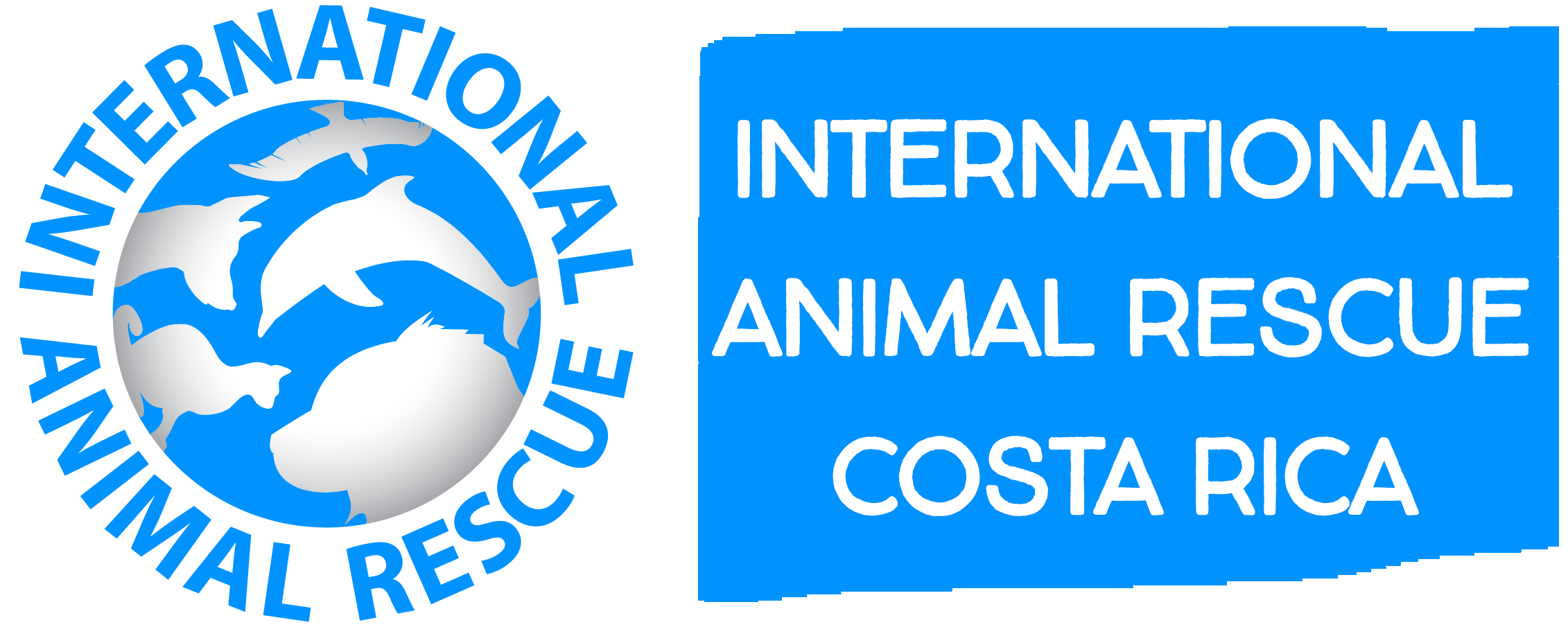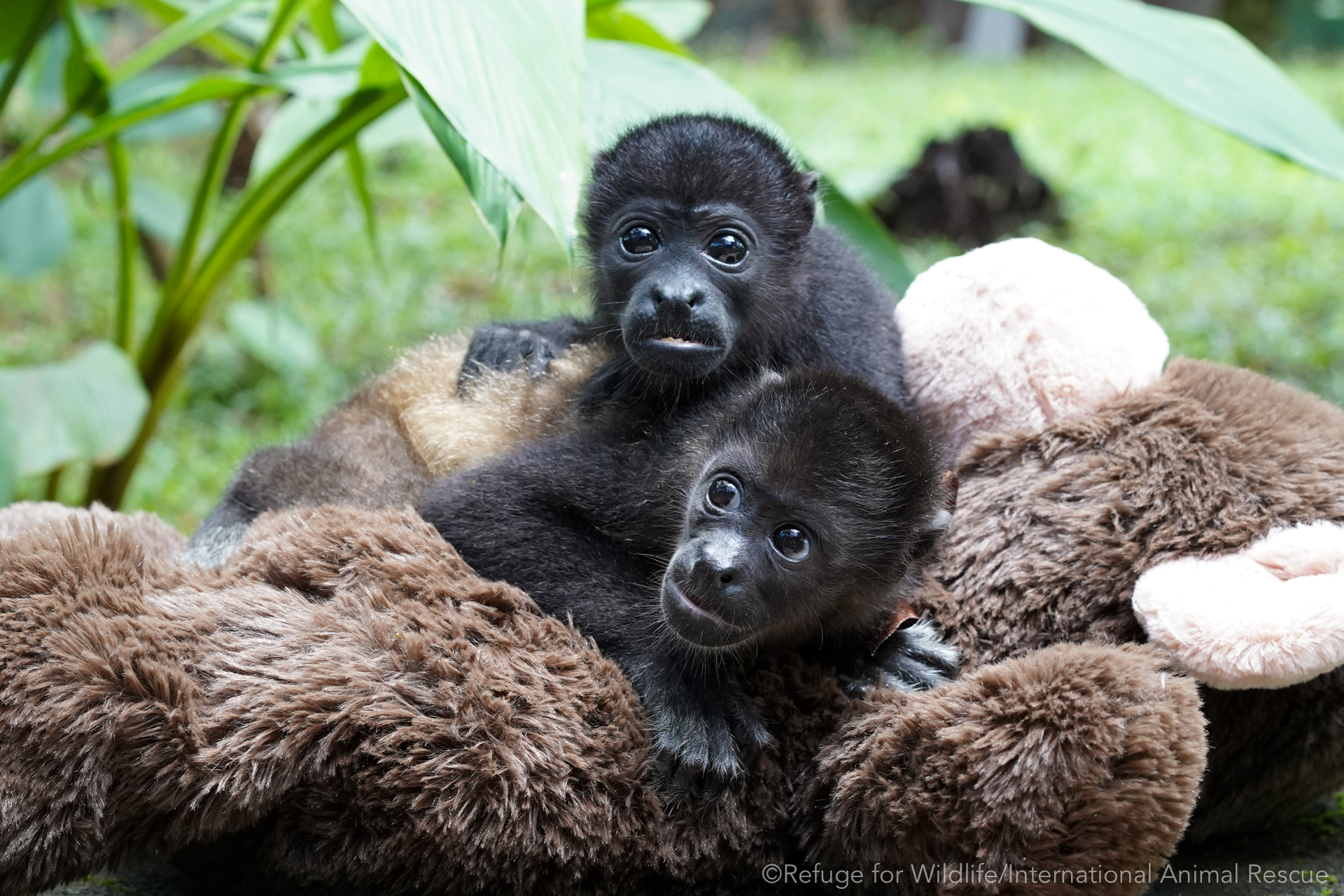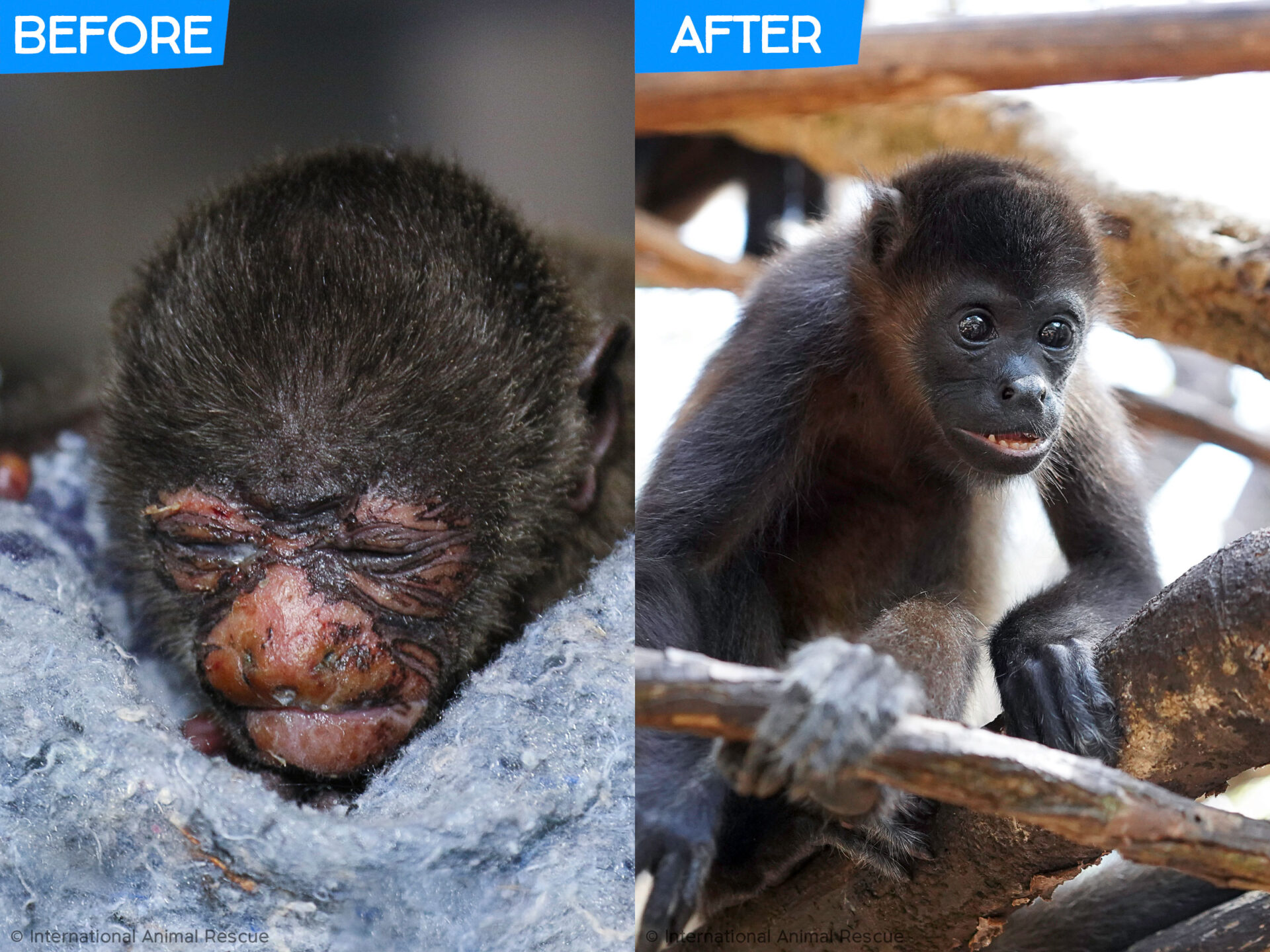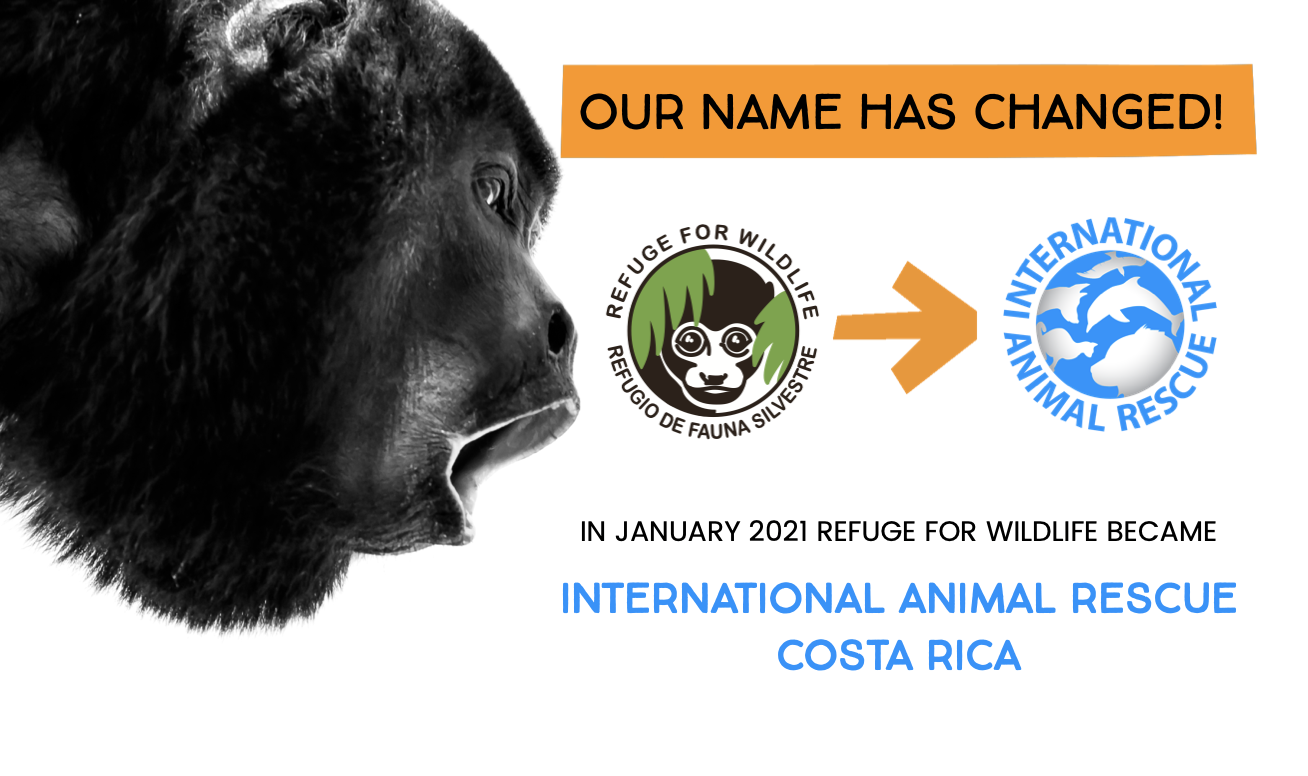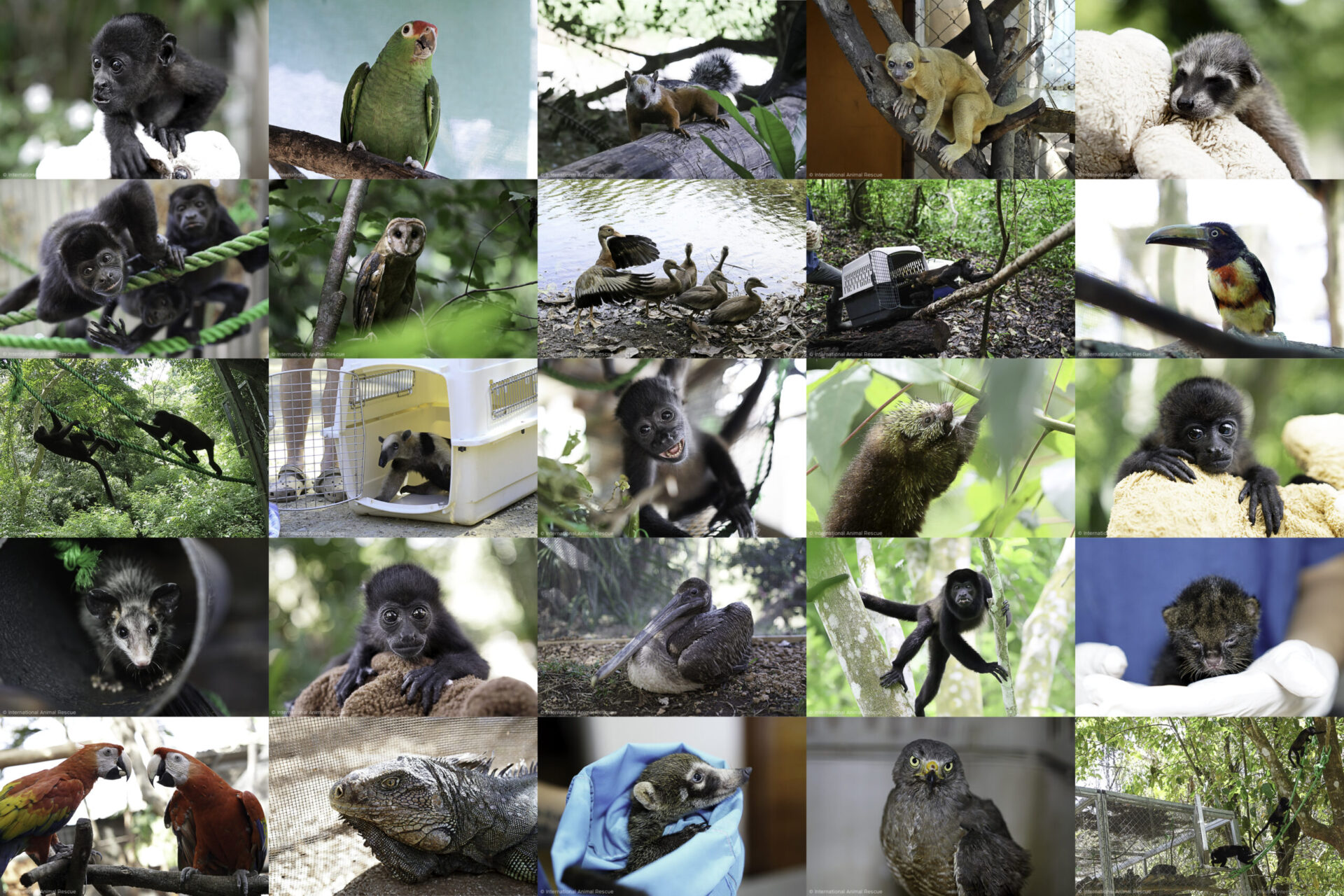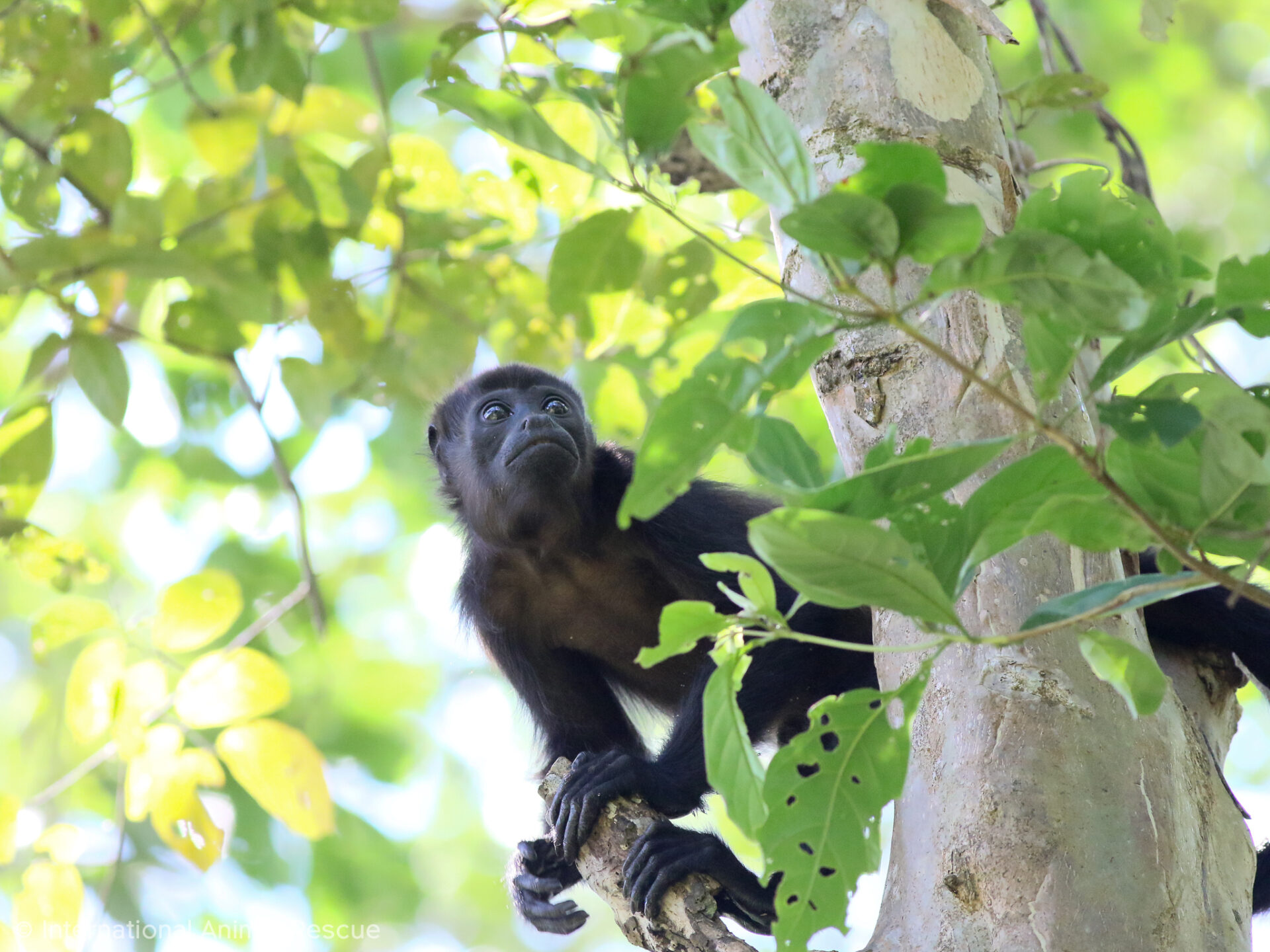
More Orphaned Howlers Rehabilitated and Released!
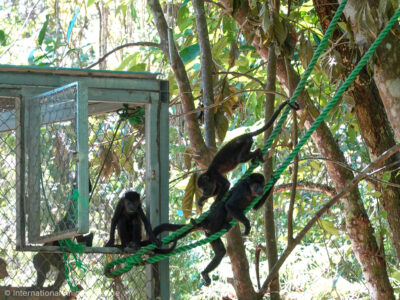 We are overjoyed to announce that even more orphaned howler monkeys have returned to their forest home. Allan, Camila, Leslie, Marlon, Valery, and Victoria are the next troop of monkeys to have graduated from our Orphaned Howler Rehabilitation Program.
We are overjoyed to announce that even more orphaned howler monkeys have returned to their forest home. Allan, Camila, Leslie, Marlon, Valery, and Victoria are the next troop of monkeys to have graduated from our Orphaned Howler Rehabilitation Program.
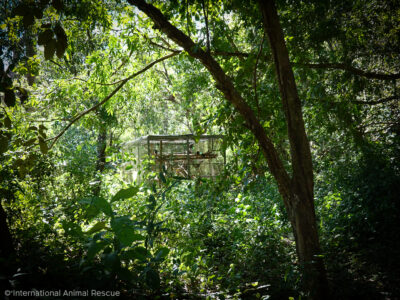 After an extensive veterinary evaluation to ensure they met the requirement for release, the monkeys were transported to our release enclosure deep in the forest in San Juanillo. The monkeys spent a few weeks getting used to their new surroundings and it wasn’t long before the troop was ready to explore their new home. As with every release we have done previously, the howlers were excited to finally go out into the treetops and jump and climb in their huge new playground!
After an extensive veterinary evaluation to ensure they met the requirement for release, the monkeys were transported to our release enclosure deep in the forest in San Juanillo. The monkeys spent a few weeks getting used to their new surroundings and it wasn’t long before the troop was ready to explore their new home. As with every release we have done previously, the howlers were excited to finally go out into the treetops and jump and climb in their huge new playground!
The IAR Costa Rica team was thrilled to watch the monkeys they raised from infancy finally return to the forest where they belong. The troop has the option of leaving the area straight away or staying close to the enclosure for a few days where we will provide food for them during the adjustment to freedom. As there is plenty of yummy, natural food resources inside the forest, the monkeys always prefer to leave the area and begin their life together living like wild monkeys straight away.






Orphaned Howler Rehabilitation Program
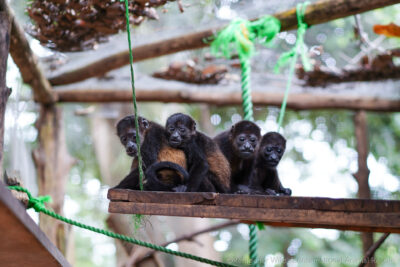 Our Orphaned Howler Rehabilitation Program takes approximately 3.5 years to complete with most monkeys joining us as infants. The majority of our rescues were orphaned due to unsafe power distribution, dog attacks and car accidents – all preventable. Sadly, most infants who lost their mothers due to electrocution often succumb to internal injuries and never make it past the first stage of our program. When the infants are first rescued, they spend a period of quarantine inside our wildlife clinic where they are monitored 24 hours a day. Those that need veterinary care for injures are treated and remain under veterinary supervision until they are healed and ready to leave our clinic. The infants are then slowly introduced to the other monkeys inside our Infant Nursery and often bond very quickly with the other monkeys. At times, the first stage of our program is so filled with infant howlers that there can be 20 or more infants in the large indoor/outdoor enclosure. The large group naturally separates into younger infants and older infants. After about a year, the little ones have grown, learned essential climbing and social skills, and no longer need to be hand-fed infants formula. The older infants then transition onto the next stage in our program, the Juvenile Nursery.
Our Orphaned Howler Rehabilitation Program takes approximately 3.5 years to complete with most monkeys joining us as infants. The majority of our rescues were orphaned due to unsafe power distribution, dog attacks and car accidents – all preventable. Sadly, most infants who lost their mothers due to electrocution often succumb to internal injuries and never make it past the first stage of our program. When the infants are first rescued, they spend a period of quarantine inside our wildlife clinic where they are monitored 24 hours a day. Those that need veterinary care for injures are treated and remain under veterinary supervision until they are healed and ready to leave our clinic. The infants are then slowly introduced to the other monkeys inside our Infant Nursery and often bond very quickly with the other monkeys. At times, the first stage of our program is so filled with infant howlers that there can be 20 or more infants in the large indoor/outdoor enclosure. The large group naturally separates into younger infants and older infants. After about a year, the little ones have grown, learned essential climbing and social skills, and no longer need to be hand-fed infants formula. The older infants then transition onto the next stage in our program, the Juvenile Nursery.
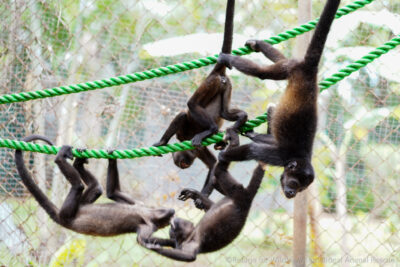 During this next stage in their rehabilitation, the monkeys are moved into a much taller outdoor enclosure and no longer have any contact with humans (with the exception of essential veterinary care). At this point, the monkeys will also be introduced to some new food items and more advanced enrichment items. A basic social hierarchy is formed and potential future leaders take on alpha roles within the group. After another year has passed, the group is carefully assessed by our veterinary team to decide which monkeys will graduate to the 3rd stage in our program, the Pre-release Enclosure. Some of the smaller monkeys might stay in the 2nd stage of our program to be given a little more time to gain weight. Those monkeys will join the older infants as they move through the program to the next step.
During this next stage in their rehabilitation, the monkeys are moved into a much taller outdoor enclosure and no longer have any contact with humans (with the exception of essential veterinary care). At this point, the monkeys will also be introduced to some new food items and more advanced enrichment items. A basic social hierarchy is formed and potential future leaders take on alpha roles within the group. After another year has passed, the group is carefully assessed by our veterinary team to decide which monkeys will graduate to the 3rd stage in our program, the Pre-release Enclosure. Some of the smaller monkeys might stay in the 2nd stage of our program to be given a little more time to gain weight. Those monkeys will join the older infants as they move through the program to the next step.
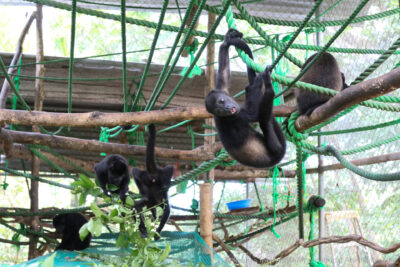 Our Pre-release Enclosure is the last stage that takes place at our rescue center and it is where the monkeys face their greatest challenge – they must prove that they will be able to survive in the wild. They are continually assessed, ensuring they are gaining sufficient weight, that they are behaving appropriately (as wild monkeys would), and that they have all the foraging and climbing skills they will need in the forest. Not every monkey is eligible for release. Some, especially those that were previously illegal pets, form an unnatural attachment to humans and can never be released. Once another year has passed and the monkeys have shown that they can survive in the wild, they are transported to our release location, deep inside the forest. It is at this 4th and final stage of our program that the orphans will begin their new lives. After spending several weeks inside our release enclosure getting used to their new surroundings, the hatch at the top of the enclosure is opened and the monkeys are free to explore their new home. For several days, we continue to provide food inside the enclosure, but it is very rare that any of the monkeys stay around as they are very eager to start their new lives in the forest.
Our Pre-release Enclosure is the last stage that takes place at our rescue center and it is where the monkeys face their greatest challenge – they must prove that they will be able to survive in the wild. They are continually assessed, ensuring they are gaining sufficient weight, that they are behaving appropriately (as wild monkeys would), and that they have all the foraging and climbing skills they will need in the forest. Not every monkey is eligible for release. Some, especially those that were previously illegal pets, form an unnatural attachment to humans and can never be released. Once another year has passed and the monkeys have shown that they can survive in the wild, they are transported to our release location, deep inside the forest. It is at this 4th and final stage of our program that the orphans will begin their new lives. After spending several weeks inside our release enclosure getting used to their new surroundings, the hatch at the top of the enclosure is opened and the monkeys are free to explore their new home. For several days, we continue to provide food inside the enclosure, but it is very rare that any of the monkeys stay around as they are very eager to start their new lives in the forest.
Meet the Monkeys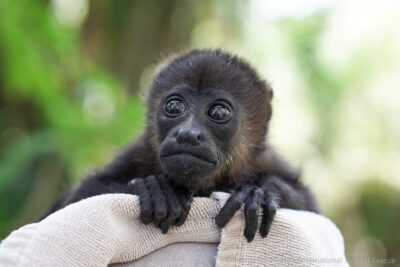
Allan
Allan was rescued after his mother was hit by a car and killed. Thankfully Allan was not seriously injured, but he was too young to be without a mother to care for him. Allan was the oldest rescue in the troop and his confidence helped the other monkeys in the troop to become more independent.
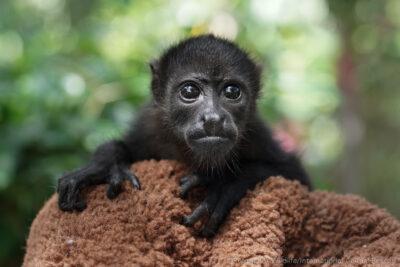 Camila
Camila
Camila’s mother was killed when she was attacked by dogs. Camila, who was clinging to her mother’s back at the time, had some small cuts on her left hand but was otherwise unharmed by the incident. Dog attacks are the second most common reason for howler rescues (electrocution is the first) at IAR Costa Rica.
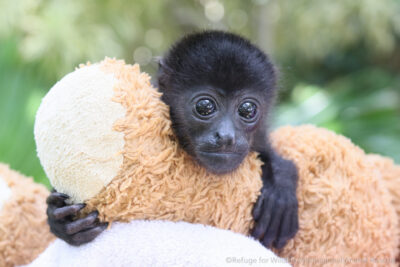 Leslie
Leslie
Leslie was rescued when she and her mother were electrocuted by uninsulated power lines. Thankfully both lived due to the low voltage in the area, but Leslie’s mother was scared and ran off leaving Leslie behind needing our help. Leslie was the youngest rescue in this troop but quickly grew into a strong, large monkey.
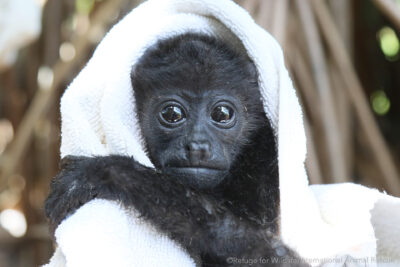 Marlon
Marlon
Marlon was rescued after he was found alone with no mother and no troop around. We do not know what happened to his family or how he became separated from them, but he was too young to be by himself. When he arrived he was dehydrated and extremely hungry and without our help, he wouldn’t have survived in the wild much longer.
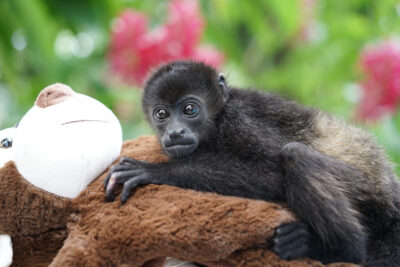 Valery
Valery
Valery was orphaned when her mother was electrocuted and killed due to unsafe power distribution. Valery sustained wounds to her hands from where the electricity surged through her mother’s body, burning her. She received intensive veterinary care and thankfully, never showed any signs of internal organ damage.
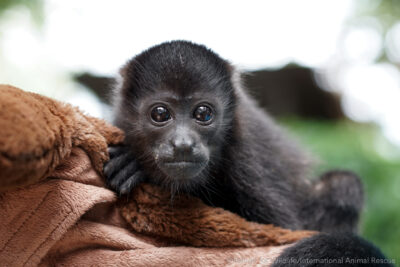 Victoria
Victoria
Victoria was rescued when she was found all alone by the side of the road. Her troop could not be located and we do not know what happened to her mother. Since she was found near the road, we suspect that her mother might have been hit by a car, but we don’t know for sure.

